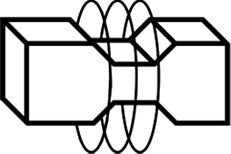When it comes to joining materials with intricate shapes, traditional welding techniques can struggle to achieve a uniform and reliable bond. Emabond welding, however, excels in handling complex geometries, thanks to its non-contact approach and the ability to integrate joint design seamlessly. Here’s how this advanced technology makes welding challenging shapes more manageable.
The Power of Non-Contact Welding
The key advantage of Emabond welding lies in its non-contact nature, which means there’s no direct pressure applied by the RF Equipment to the materials being joined. Pressure is still required for the process, but as a separate operation during the weld cycle. This is a significant benefit when working with complex geometries, as it allows for even energy distribution around the entire weld area without physical obstruction. Unlike traditional methods that might struggle to reach every surface or can cause deformation due to heat and pressure, Emabond welding efficiently joins intricate shapes without compromising the structure or appearance of the materials.
Joint Design for Complex Geometries
Successfully welding complex shapes requires more than just a high-quality process; it demands a carefully considered joint design that fits the unique characteristics of the parts involved. Emabond technology allows for precision in locating and integrating joint designs to optimize the welding process. Here’s how this benefits complex geometries:
- Flexible Joint Placement: The Emabond system can target specific joint locations regardless of the shape or size of the material. This flexibility means joints can be designed to maximize strength while accommodating even the most intricate shapes.
- Custom Integration: Joint designs can be tailored to the unique requirements of each project, with adjustments to energy-directing elements, weld angles, and other features that make complex geometries easier to manage.
- Optimized Bonding Area: With the ability to integrate energy-directing features within the weld joint, Emabond ensures that energy is concentrated exactly where it’s needed, leading to a more consistent and reliable bond across irregular shapes.
Why Complex Geometries Are No Problem with Emabond Welding
Non-contact welding isn’t just about reaching difficult areas; it also helps overcome some common challenges associated with complex geometries, such as:
- Decreased Deformation Risks: Because there’s no direct physical force applied to the materials by the RF, Emabond welding reduces the risk of warping or deforming delicate components. This is crucial when dealing with thin walls, fine details, or intricate designs where structural integrity is essential.
- Uniform Heat Distribution: The process uses electromagnetic energy to generate heat uniformly across the weld area, ensuring that even complex or irregular surfaces achieve a consistent bond. Traditional methods often fail to achieve this level of uniformity, especially on contoured shapes.
- Adaptability to Material Variations: Emabond welding is compatible with various materials, including plastics and composites, commonly used in complex-shaped parts. The technology’s adaptability allows for welding combinations of different materials without compromising the quality of the weld.
Real-World Applications
Emabond welding’s ability to handle complex geometries has made it a preferred choice in industries such as automotive, medical devices, consumer electronics, and aerospace. These fields often involve intricate designs where traditional welding methods fall short. Here’s why it stands out:
- Automotive: Parts like dashboards, instrument panels, and fluid reservoirs often have unique shapes and contours. Emabond welding’s non-contact process ensures a seamless bond across these complex surfaces.
- Medical Devices: Precision is key in medical equipment manufacturing, where components may have tiny and detailed features. The non-invasive nature of Emabond welding minimizes the risk of damage while ensuring a strong, consistent joint.
- Consumer Electronics: With products getting smaller and more complex, Emabond’s ability to weld intricate plastic housings without affecting delicate internal components makes it invaluable for electronic devices.
The Bottom Line
Emabond welding is a game-changer for welding complex geometries. Its non-contact approach eliminates many challenges associated with traditional welding methods, while the ability to precisely integrate joint designs enhances the overall bond quality. When intricate shapes are no problem, you can unlock new possibilities in design and manufacturing across various industries.

